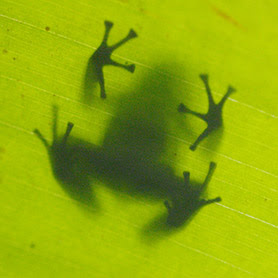Dust has plagued photographers since the beginning of time and digital photography is no different. The latest generation of cameras helps reduce the problem with sensor cleaning features but whenever you change the lens you increase the possibility of getting dust on your sensor. I suggest waiting to clean your sensor until it becomes a problem since it is easy to remove later with Photoshop. Once it becomes a problem then I clean my sensor. On some photo shoots I have cleaned my sensor each evening.
Disclaimer, clean your sensor at your own peril. I am not responsible for you damaging your sensor. Know that cleaning your sensor is not covered by your camera's warranty and by cleaning your sensor you can damage the sensor. Just proceed with caution. Whatever you do don't use compressed air. The water vapor that accompanies compressed air can cause some real problems. I do know of some very expensive compressed air systems, which guarantee no water vapor, but most of us don't own such a system or want to travel with it. You can send your camera in for servicing to have a professional clean the sensor if you aren't comfortable doing it yourself, but I haven't heard of many people having good results. With that disclaimer clearly posted, I have heard of some people damaging their sensors but I don't personally know anyone that has, so let's proceed.
When you are cleaning the sensor you are actually cleaning an infrared glass filter that sits on top of the actual sensor. The reason the manufacturer warns anyone about cleaning their own sensors is that if you scratch this filter it is a costly repair since the filter is attached to the actual sensor, so if you scratch it requires replacing the entire sensor module.
First, how I do it. Your documentation will explain exactly how to get your camera into sensor cleaning mode. I like to put my camera on a tripod while I clean it and sit in a char looking directly into the lens mount at head height with my cleaning tools on a desk or table near by.
There are many ways people clean their sensors, some are more affective and easier than others. The easiest option is
bulb blower. Be sure to not touch the sensor with the blower tip. If you don't have steady hands you can rest the blower on the lens mount. I find this option easy but doesn't clean much dust off rather it just moves it around.
Another easy option is the
Arctic Butterfly Sl 700. I use this and it works pretty well. This brush spins up to create static electricity attracting the dust particles on your sensor and works surprisingly well. Spin it up to clean it off again before putting it away or going in for another swipe.
One simple option but expensive is
sensor brushes by
Visible Dust. To use these brushes spray CO2 on the brush for 10 seconds the whip the sensor. Repeat as necessary. These brushes work great.
The last option for difficult to remove dust particles and I've also used quite a bit is the clean the actual sensor with cleaning solution. For this you''ll want to buy a sensor swab for the sized sensor you have:
First you want the right swab for the sensor you have:
1/3rd sized sensors found on 1D series cameras such as 1D, 1D Mark II or 1D Mark III:
Type 1APS sized sensors found on a Rebel, 50D, D40X, or D300:
Type 2Full framed sensors found on a 1Ds series camera, D3, D700, 5D, 5D Mark II:
Type 3Eclipse Cleaning Solution (which is methanol) by
Photographic Solutions. The biggest problem is due to shipping regulations in the US it is impossible to order but fortunately my local camera shop keeps it in stock. The last thing you want is a
loupe so you can see the sensor. This makes the difference between success and failure. The process is quite simple, put three drops of solution on the swab end, carefully wipe from across the sensor in one motion, turn the swab over and wipe back the other direction. The Eclipse Cleaning Solution will evaporate very quickly. Typically I take a quick shot of a blue sky at a f/22 checking for dust and repeat if the sensor isn't clean and you can use the loupe at any time to see if you need to do more cleaning. They say you can do it in one swipe, but it usually takes me two or three tries to get it clean.
You can find a lot of videos on
You Tube about sensor cleaning. If you have never cleaned your Digital SLR then you might want to watch a few of them before you get the nerves up to stick stuff in your camera.





















